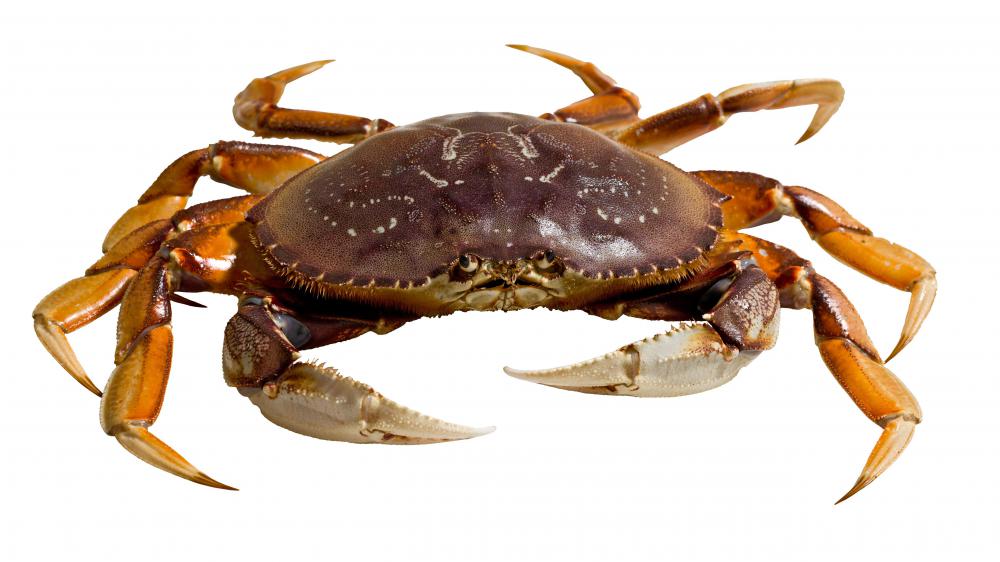At AllThingsNature, we're committed to delivering accurate, trustworthy information. Our expert-authored content is rigorously fact-checked and sourced from credible authorities. Discover how we uphold the highest standards in providing you with reliable knowledge.
What is a Cobia?
The cobia ((Rachycentron canadum)) is a marine fish living in areas of the Atlantic and Pacific Oceans with temperatures of at least 74°F (24°C). Also called aruan tasek, black kingfish, black salmon, crabeaters, ling, and lemonfish, the cobia is the only living species of the Rachycentridae family. Its closet relatives are the remora, or suckerfish, of the Echeneidae family.
The cobia can reach 78 inches (two meters) in length, and 150 pounds (68 kg) in weight. It has small eyes, a protruding lower jaw, and fibrous teeth covering the jaw, tongue, and roof of the mouth. The fish is smooth and dark brown, with a white underbelly and dark stripes along the sides that become more prominent in the mating season of April to September.

Cobia fish are usually solitary outside of the mating season, and they migrate north during the summer to warmer waters. The fish sometimes congregate in protected areas like reefs and harbors. Male fish mature at two years and females at three years, and both sexes can live up to 15 years. Before reaching adulthood, the fish are patterned with black and white stripes.

Cobia feed on other sea animals, including crabs, fish, and squid, and they sometimes act as scavengers, dining on the leftovers of larger fish species. Their predators are larger fish including the dolphinfish and the shortfin mako shark. They are also susceptible to parasites including acanthocephales, copepods, flukes, roundworms, and tapeworms.
Cobia are strong and fight hard when fished, and have become a popular sport fish as a result. They are sometimes a bycatch in the commercial fishing of king mackerel, but are not commercially fished themselves. However, they have been commercially farmed. Cobia are expensive on the market, but alleged to have an excellent flavor and texture. Cobia fillets are usually served poached or grilled.
Frequently Asked Questions
What is a Cobia and where can it be found?
Cobia, also known as Rachycentron canadum, is a pelagic fish found in warm-temperate to tropical waters worldwide. They are commonly seen in the Atlantic Ocean, from the United States all the way to Argentina, and in the Indo-Pacific region. Cobia prefer to inhabit nearshore and offshore waters, often associating with floating objects or structures.
How can you identify a Cobia?
A Cobia is easily identifiable by its long, slim body, dark lateral stripe, and a flat, broad head with a protruding lower jaw. They have small scales, a dark brown coloration on top transitioning to white on the belly, and a distinctive set of dorsal fins; the first is composed of a series of 7-9 isolated spines.
What does the Cobia diet consist of?
Cobia are opportunistic predators that feed on a variety of prey, including crabs, squid, and smaller fish. Their diet primarily consists of crustaceans and cephalopods, but they are known to consume almost anything they can catch, which contributes to their rapid growth and popularity as a game fish.
Is Cobia a good fish to eat?
Yes, Cobia is highly prized for its firm texture and mild, sweet flavor, making it a favorite among chefs and seafood enthusiasts. Its flesh is white and flaky when cooked, and it is rich in protein and omega-3 fatty acids, offering both taste and nutritional benefits. It's versatile in the kitchen, suitable for grilling, broiling, or sashimi.
How big can Cobia grow and how long do they live?
Cobia are known for their impressive size, with adults typically reaching lengths of 3 to 4 feet and weights of 10 to 50 pounds. However, they can grow up to 6 feet and weigh as much as 100 pounds. They have a lifespan of 10 to 12 years, during which they can reach sexual maturity in just 1 to 2 years.
Are Cobia endangered or threatened?
Cobia are not currently listed as endangered or threatened. However, they are subject to fishing pressures due to their popularity as a sport fish and for their desirable meat. Management measures are in place in various regions to ensure sustainable populations, such as size limits and seasonal closures to protect spawning aggregations.
AS FEATURED ON:
AS FEATURED ON:












Discussion Comments
I caught one a few weeks ago and my gut instinct was to not eat it.
As a fish that can be a bottom feeder and feed on parasites, I don't think I would want to eat cobia. I've heard that the best cobia recipes are delicious, but I think I'll stick to salmon.
Post your comments